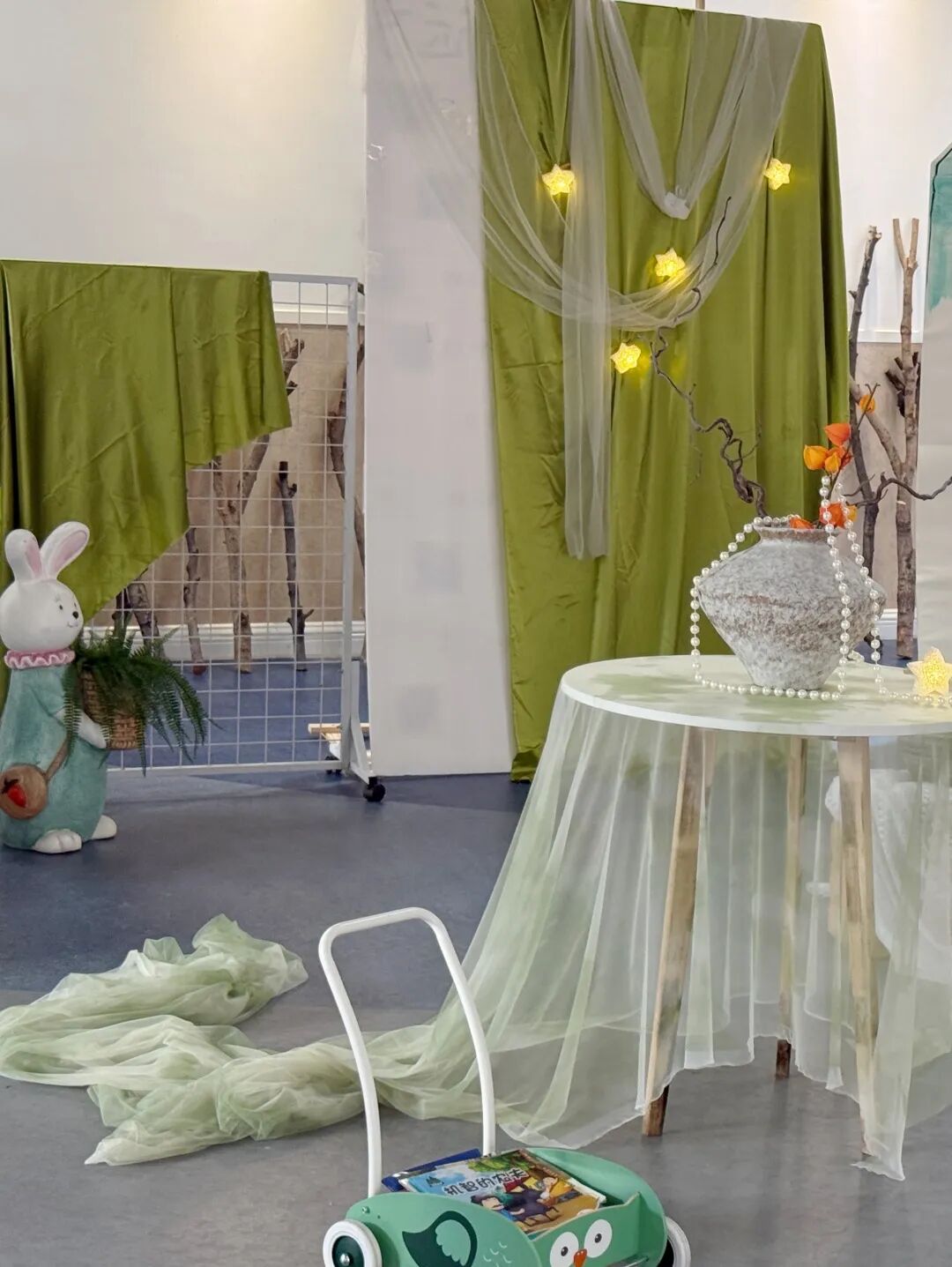11月21日是“世界问候日”,节日的意义在于向全世界祈祷和平。世界问候日的宗旨也由最初的通过寄发问候信、呼吁和劝告以和平方式解决分歧,促进世界和平,在和平的今天发展成为以促进人类相亲相爱为主题。
November 21 is a World greeting Day,which means praying for peace throughout the world. The purpose of World Greetings Day has also evolved from the original purpose of promoting world peace by sending greetings letters, appeals and exhortations to resolve differences in a peaceful way and promoting human love.
世界问候日来临之际,为了促进幼儿与他人的交往、大胆表达问候语言、通过自己的良好祝愿与问候增进人们之间的和谐相处,培基幼儿园以“问候的N种打开方式”为主题开展了丰富多彩的活动,和培基宝贝一起Say Hello吧!
On this occasion of World Greetings Day, in order to promote the communication between children and others, boldly express greeting language, and enhance the harmonious coexistence between people is through their own good wishes and greetings。Baston Kindergarten has carried out a variety of activities under the theme of “Open greetings”
一场问候的谈话
A greeting conversation
1、“你认为什么是问候?”
问候就是看见老师说:您好!看见好朋友说:你好!问候就是给妈妈一个亲亲,问候就是抱一下还有握握手。
2、“你喜欢什么样的问候方式呢?”
“我喜欢碰拳”
“我喜欢拥抱”
“我喜欢拉拉手”
在这场有关问候的谈话中,孩子们对“问候”的理解,从仅仅是见面说“你好”,到懂得“问候”是一种表达、一种礼貌、一种仪式。
1.”What do we mean by greeting?”
Greeting is to see the teacher and say: Hello! See a good friend say: hello! A greeting is a kiss for mom. A greeting is a hug and a handshake.
2.”What kind of greeting do you prefer?”
“I love fist bumps.”
“I love hugs.”
“I like to pull my hands.”
In this conversation about greetings, children’s understanding of “greetings” goes from just saying “hello” to understanding that “greetings” is an expression, a courtesy, and a ritual.
世界问候知多少
How much do you know about world Greetings
世界问候日对于每个人来说,都应该成为一个温暖的日子。为了让孩子体验问候所带来的关爱和温暖,中班的老师带孩子们了解了问候日的由来,知道了中国人见面的问候方式,比如:笑脸、拥抱、握手。还了解了不同国家的问候礼仪,比如:鞠躬、碰鼻子、双手合十等,在活动之余,孩子们纷纷效仿起各种不同的问候礼仪。
1. 新西兰毛利人喜欢碰鼻子行礼
2. 泰国人习惯合掌躬首相互向对方致礼,问候“莎瓦迪卡”
3. 法国人亲朋好友见面通常会互相用脸颊碰一下。
World Greetings Day should be a warm day for everyone. In order to let the children experience the care and warmth brought by greetings, the teachers of the middle class took the children to understand the origin of greetings Day and know the Chinese greeting ways, such as smiling faces, hugging, and shaking hands. Also understand the greeting etiquette of different countries, such as bowing, touching the nose, clasping the hands, etc., in the rest of the activity, the children have copied a variety of different greeting etiquette.
-
The Maori people of New Zealand like to touch their noses
-
Thai people are used to bowing their heads together to greet each other and greet “Shavadika”
-
French people usually touch each other on the cheek when they meet friends and relatives.
|
|
|
|
|
|
“问候”的古往今来
“Greetings” through the ages
老师还带着小朋友们一起外出“大观园”开展研学活动,学习了中国古代礼仪。中华民族是一个有着悠久历史的“礼仪之邦”,我们的祖先历来注重文明礼貌教育。老师们以教学活动、游戏活动为载体,让幼儿从不同的年代和不同的国家认识了不同的文明礼仪。
The teacher also took the children out to “Grand View Garden” to carry out research activities and learn ancient Chinese etiquette. The Chinese nation is a “state of etiquette” with a long history. Our ancestors have always paid attention to the education of civility. Teachers use teaching activities and game activities as the carrier, so that children from different ages and different countries to know different civilized etiquette.
我们的问候在这里
Our greetings are here
小班的教室里,孩子们正随着歌曲舞动,玩起了找朋友的游戏,向朋友传达了浓浓的问候情。游戏结束后又玩起了传声筒,传声筒游戏让孩子们明白:即使相隔再远也要向家人进行亲切地问候。
In the small class classroom, the children are dancing to a song, playing the game of finding friends, and conveying the thick greetings to their friends. After the game, they played a microphone, and the microphone game made the children understand that they should greet their families affectionately even if they are far away.
在传递问候的过程中,孩子们不仅学会了与人交往时应该使用的问候语,也学会了如何树立伙伴意识以及如何更好地融入集体生活。
In the process of passing on greetings, children not only learn the greetings they should use when interacting with others, but also learn how to establish a sense of partnership and how to better integrate into group life.
带上问候,让爱传播
Five、with greetings, let love spread
一句简单的问候,一声甜甜的祝福,一个淡淡的微笑,都能给人带来温暖和感动。大班的小朋友以“让问候成为一种习惯”为主题进行国旗下讲话,倡议老师、小朋友们一起加入到传递幸福和爱的行列中。
A simple greeting, a sweet blessing, a light smile can bring warmth and affection to people. The children in the big class made a speech under the flag with the theme of “Let greetings become a habit”, and proposed that the teachers and children join in the ranks of passing happiness and love.
“问候”背后蕴含的育儿知识
——倾听与理解力
Sixth、the parenting common sense behind the “greeting” -listening and understanding
《幼儿园3-6岁儿童学习与发展指南》 中提出:3-6岁幼儿处于语言发展的关键期,口语交流能力的培养是幼儿语言学习的重中之重。良好的倾听习惯的养成是从学前阶段开始的,因此就幼儿语言学习和发展而言,倾听是不可缺失的一种行为能力。《指南》“倾听与表达”目标中表示:要求幼儿在语言学习与发展中学会有意识的倾听别人所说的话,分析性的倾听交流的信息,同时形成理解性的倾听语言能力。
In the Guide to Learning and Development for Children aged 3-6 in Kindergarten, it is proposed that children aged 3-6 are in the critical period of language development, and the cultivation of oral communication ability is the most important thing in children’s language learning. The formation of good listening habits starts from the preschool stage, so listening is an indispensable behavioral ability in terms of children’s language learning and development. According to the “Listening and Expression” goal of the Guide, children are required to learn to consciously listen to what others say, listen analytically to communication information, and form the ability to understand listening language in language learning and development.
|
|
|
|
|
|
那么为什么要倾听儿童呢?
因为我们每个人都是有思想的独立个体,每个人都应该被看见、被理解。而没有倾听,就谈不上理解,没有倾听,就谈不上尊重。
So why listen to children?
Because each of us is a thinking individual, each of us deserves to be seen and understood. Without listening, there is no understanding, and without listening, there is no respect.
当孩子拿着一幅画兴高采烈地说:“妈妈,你看”时,我们是认真观察他的作品后和他一起讨论作品内容,还是暗示他应该用更多的颜色作画?
When a child holds a painting and says happily, “Mom, look,” do we look at it carefully and discuss the content with him, or do we suggest that he should paint with more colors?
当孩子因为被抢玩具而着急打了其他小朋友,并且哭闹的时候,我们是直接告诉他“不能打人”“哭闹没用”,还是有察觉到他此刻心中的委屈与无助?
When the child is worried about hitting other children because of the toy being robbed, and crying, do we directly tell him that “you can’t hit” and “crying is useless”, or do we notice the grievance and helplessness in his heart at this moment?
当孩子观察天空后向我们问道:“为什么天空是蓝色?”我们有没有捕捉到刺客孩子正对这片浩瀚天空的专注与好奇?有没有可能,这个孩子心中已经有了无数个答案–“会不会是奥特曼打翻了蓝色颜料盘呢?”面对这些,我们会一笑而过,还是认真去听他的想法、他的表达?
When children look at the sky and ask us, “Why is the sky blue?” Have we captured the attention and curiosity of the assassin children in this vast sky? Could it be that the child already had a million answers in his mind – “Could Ultraman have knocked over the blue paint tray?” In the face of these, will we laugh it off, or seriously listen to his ideas, his expression?
孩子的表达每时每刻存在,所以倾听也应该每时每刻存在,它可以成为我们成人理解儿童的抓手,但不应该成为某一固定环节、某一种一定需要书面表达出来的任务。当我们静下心来去倾听孩子的声音,我们便能更好的理解孩子。
Children’s expression exists all the time, so listening should also exist all the time, it can become our adults to understand children’s grasp, but should not become a fixed link, a certain need to write out the task. When we calm down and listen to our children, we can understand them better.
所以,“倾听”不是“听到”和“记录”,而是“听懂”和“尊重”。站在成人的角度,当倾听孩子时,要对孩子说的话保持信心,因为当孩子感觉到自己被倾听时,他们就会继续提问并分享能够反映其体验的信息和感受,同时在这个过程中,不需要给孩子过多的信息,坚持就事论事的原则,我们需要通过观察和倾听来判断他们何时获得了当下所需要的信息。当孩子感到自己被倾听和回应,就会继续觉得他们能与我们一起讨论自己的思想、观点和感受。
Therefore, “listening” is not “hearing” and “recording”, but “understanding” and “respecting”. From an adult’s point of view, when listening to a child, be confident in what the child is saying, because when the child feels that they are being heard, they will continue to ask questions and share information and feelings that reflect their experience, and in this process, do not need to give the child too much information, adhere to the principle of the case. We need to watch and listen to determine when they are getting the information they need in the moment. When children feel heard and responded to, they will continue to feel that they can discuss their thoughts, opinions and feelings with us.
|
|
|
|
|
|
那“理解”什么呢?
理解孩子的语言与行为。
孩子的行为与语言背后反应了孩子的内心世界,不要急于指责或者定义孩子的行为,针对原因去包容去理解后,进行教育。孩子是需要我们成人引导教育的,并且是积极的回应与引导,这点非常重要。
And “understand” what?
Understand your child’s language and behavior.
The child’s behavior and language reflect the inner world of the child, do not rush to blame or define the child’s behavior, according to the reasons to tolerate and understand, and then carry out education. Children need our adult guidance education, and is a positive response and guidance, this is very important.
温馨问候语
——亲子情感交流方式
Seven、warm greetings – parent-child emotional communication
研究表明,那些感受到父母关爱和温暖的孩子,长大后会更加独立和自信。很多家长都很想鼓励自己的孩子,可是不知道如何去表达,分享几句温馨问候语,常常说给孩子听吧。
Studies show that children who feel loved and warm by their parents grow up to be more independent and confident. Many parents want to encourage their children, but do not know how to express, share a few warm greetings, often say it to their children.
1. 不着急,我可以再等等你。
2. 别紧张,我相信你一定可以。
3. 不用怕,我会支持你。
4. 我尊重你的意见。
5. 你讲的故事可真有趣。
6. 你画的色彩丰富,可真有想象力。
7. 你朋友真多,是个社交小达人。
8. 你做出的决定我特别支持。
9. 你解决问题的态度我非常欣赏。
10. 无论如何,我们都最爱你了。
11. 你自己完成了这件事我很钦佩。
12. 今天又是准时上床睡觉,真自觉。
13. 你帮忙做家务,我可太幸福了。
14. 妈妈也是第一次做妈妈,如果做的不够好,请多体谅。
15. 有你这样的孩子妈妈真幸福。
-
1.Don’t worry, I can wait for you.
-
2.Don’t be nervous. I’m sure you can.
-
3. Don’t be afraid. I’ll support you.
-
4. I respect your opinion.
-
5. Your stories are really interesting.
-
6. Your paintings are colorful and imaginative.
-
7. You have so many friends and are a social butterfly.
-
8. I particularly support your decision.
-
9.I really appreciate your problem-solving attitude.
-
10. Anyway, we love you the most.
-
11. I admire you for doing it yourself.
-
12. I went to bed on time again today.
-
13. I’m so happy you help me with the housework.
-
14. Mother is also the first time mother, if you do not do well enough, please understand.
-
15.I’m so happy to have a kid like you.
“世界问候日”不仅限于问候,还是一份爱与温暖的美好传递。冬意袭来,这一声问候,既系紧了我们彼此之间的牵挂,也为时光带来丝丝暖意。
“World Greetings Day” is not only a greeting, but also a beautiful transmission of love and warmth. Winter hit, this greeting, not only tight our concern between each other, but also bring warmth to the time.
扫描下方二维码
了解更多
望京园 Baston.Hope Kingdom:
(010) 64739197 64733884
太阳园 Baston.Sun Palace:
(010) 84413316 84413326
无限园 Baston. Infinity Plaza:
(010) 85738380 85738379
欧陆园 Baston.European Land:
(010) 58236013 59273452
绿城园 Baston.Green Town:
(010) 89316473 89316474
华溢园 Baston.Brilliant City:
(010) 59214810 59214820
首创园 Baston.Creation Square:
(0354) 2516655
培懿园 Baston.Virtue Garden:
(0754) 82772212 82772216
御景园 Baston.Empery Garden:
(0316) 2128662 2128379
文章转载自微信公众号:培基幼儿园











